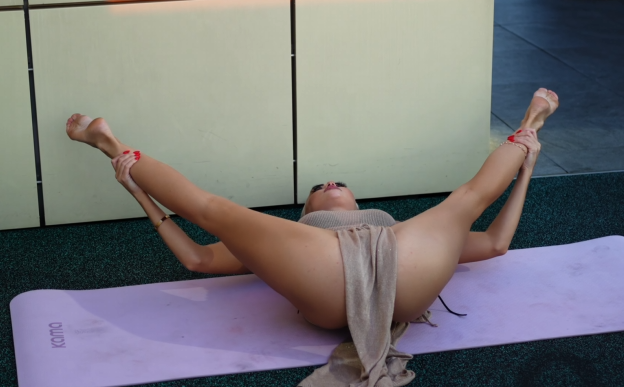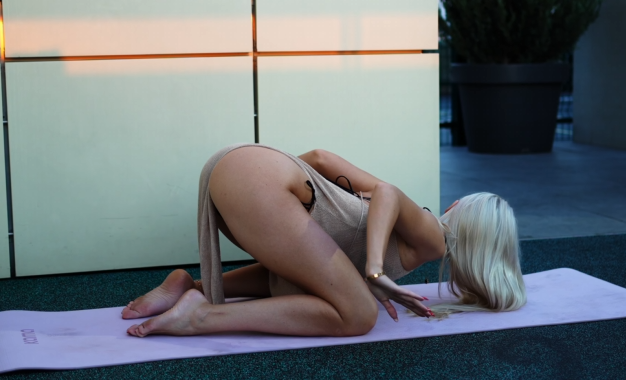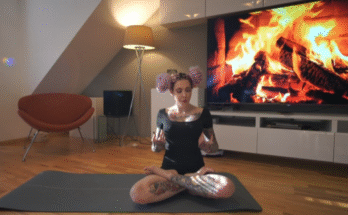
Improving hip flexibility is essential for athletes, fitness enthusiasts, and anyone who wants to move freely and painlessly in daily life. Our hips are one of the most mobile joints in the body, and they play a crucial role in activities like walking, running, squatting, and even sitting. Tight hips can lead to poor posture, lower back pain, and decreased performance in workouts. Incorporating a deep stretch routine specifically designed for the hips can dramatically improve flexibility, reduce stiffness, and boost overall mobility.
In this article, we will explore why hip flexibility is important, the benefits of deep stretching, and a comprehensive hip-focused routine that you can incorporate into your workouts.
Why Hip Flexibility Matters
The hip joint is a ball-and-socket joint, which allows for a wide range of motion. However, due to modern lifestyles where we sit for long periods, the muscles around the hips—especially the hip flexors, glutes, and adductors—can become tight and weak. This stiffness affects not only our ability to stretch but also our posture and balance.
When hip flexibility is compromised, other muscles such as those in the lower back and knees compensate, often leading to pain and potential injuries. For example, runners with tight hip flexors may experience discomfort in the lower back or hamstrings because their stride is limited. Similarly, weightlifters may struggle with deep squats or lunges due to restricted hip mobility.
By improving hip flexibility through deep stretching, you can:
- Enhance athletic performance: Increased mobility allows for better movement patterns in sports and workouts.
- Reduce risk of injury: Stretching helps lengthen and relax tight muscles, reducing strain on joints.
- Improve posture: Flexible hips encourage a neutral pelvis, which supports proper spinal alignment.
- Boost circulation: Stretching improves blood flow to muscles, aiding in recovery and reducing soreness.

Benefits of Deep Stretching for Hips
Deep stretching targets the hip muscles at their full range of motion, which is especially beneficial for those who have built-up tension from sitting or high-intensity training. Unlike quick, dynamic stretches, deep stretches involve holding a position for an extended period—typically 30 to 90 seconds. This approach allows the muscles to relax and lengthen gradually.
Key benefits include:
- Increased range of motion: Over time, consistent deep stretching can improve flexibility, enabling deeper squats, lunges, or yoga poses.
- Reduced muscle tension: Deep stretches alleviate tightness that accumulates from repetitive movements or static positions.
- Enhanced relaxation: Stretching can calm the nervous system, reducing stress and promoting mental clarity.
- Improved recovery: When done after a workout, deep stretches can help prevent stiffness and speed up muscle repair.
Hip Flexibility Deep Stretch Routine
Below is a simple yet powerful routine that focuses on improving hip flexibility. Perform these stretches after a workout or on rest days for maximum benefit.
1. Low Lunge Stretch (Hip Flexor Stretch)
- How to do it:
Start in a lunge position with your right foot forward and your left knee on the floor. Keep your torso upright and gently push your hips forward. - Focus: This stretch targets the hip flexors and quadriceps.
- Tip: Keep your core engaged and avoid overarching your lower back.
- Hold: 30–60 seconds on each side.

2. Pigeon Pose (Glute and Hip Opener)
- How to do it:
From a plank position, bring your right knee forward and place it behind your hands, angling your shin slightly. Stretch your left leg straight back. Lean forward over your bent leg for a deeper stretch. - Focus: Opens the hip rotators and glute muscles.
- Tip: If this is too intense, place a pillow or block under your hip for support.
- Hold: 45–60 seconds per side.
3. Butterfly Stretch (Adductor Stretch)
- How to do it:
Sit on the floor with the soles of your feet together and knees bent outward. Pull your feet closer to your body and press your knees toward the floor. - Focus: Stretches the inner thighs and groin.
- Tip: Keep your spine tall and avoid rounding your back.
- Hold: 30–60 seconds.
4. Seated Figure-Four Stretch
- How to do it:
Sit on the floor with both legs extended. Cross your right ankle over your left knee and bend your left leg. Lean slightly forward to feel the stretch in your outer hip and glutes. - Focus: Targets the piriformis and glute muscles.
- Tip: Keep your shoulders relaxed and spine straight.
- Hold: 30–45 seconds each side.

5. Frog Stretch (Deep Hip Opener)
- How to do it:
Get on your hands and knees, then slowly spread your knees apart while keeping your feet in line with your knees. Sit your hips back toward your heels. - Focus: Stretches the hip adductors and inner thighs.
- Tip: Place a yoga mat or towel under your knees for comfort.
- Hold: 45–60 seconds.
6. Happy Baby Pose
- How to do it:
Lie on your back and bring your knees toward your chest. Grab the outer edges of your feet and gently pull your knees toward the ground. - Focus: Opens the hips and stretches the lower back.
- Tip: Keep your lower spine on the floor and avoid straining your neck.
- Hold: 30–60 seconds.
7. Lizard Pose
- How to do it:
Start in a low lunge with your right foot forward, then place both hands inside your front foot. Lower your elbows to the ground if possible. - Focus: Opens the hip flexors, groin, and hamstrings.
- Tip: Keep your front knee aligned with your ankle.
- Hold: 30–45 seconds each side.

How to Incorporate These Stretches
To get the best results from this hip flexibility deep stretch routine:
- Perform 3–5 stretches from the list above, focusing on areas that feel the tightest.
- Hold each stretch for at least 30 seconds and repeat 2–3 times per side.
- Breathe deeply, inhaling through your nose and exhaling slowly to allow your muscles to relax.
- Avoid bouncing or forcing yourself into a painful position; stretches should feel intense but not painful.
Tips for Better Hip Flexibility
- Consistency is key: Stretching once a week is not enough to see lasting improvement. Aim for at least 10–15 minutes of hip-focused stretches 4–5 times per week.
- Warm up first: Stretching cold muscles can increase the risk of strain. Do a short warm-up—like walking, cycling, or dynamic stretches—before attempting deep stretches.
- Balance strength and flexibility: Strong glutes, core, and hip muscles support flexibility and help prevent injuries. Combine stretches with strength exercises like squats, bridges, and lunges.
- Listen to your body: Everyone’s flexibility level is different. Don’t compare yourself to others; focus on gradual progress.
- Use props: Yoga blocks, straps, or cushions can help you ease into deeper stretches without discomfort.

Conclusion
Hip flexibility is not just for dancers or yoga enthusiasts; it’s essential for everyone who wants to move without pain and maximize their workout performance. A deep stretch routine specifically targeting the hips can unlock tight muscles, improve posture, and make daily movements feel effortless.
The “Hip Flexibility Deep Stretch” workout stretching routine outlined above is perfect for improving mobility while promoting relaxation and recovery. Whether you’re an athlete, office worker, or someone who simply wants to feel more flexible, dedicating time to hip stretches will bring noticeable improvements in both physical performance and overall comfort.


